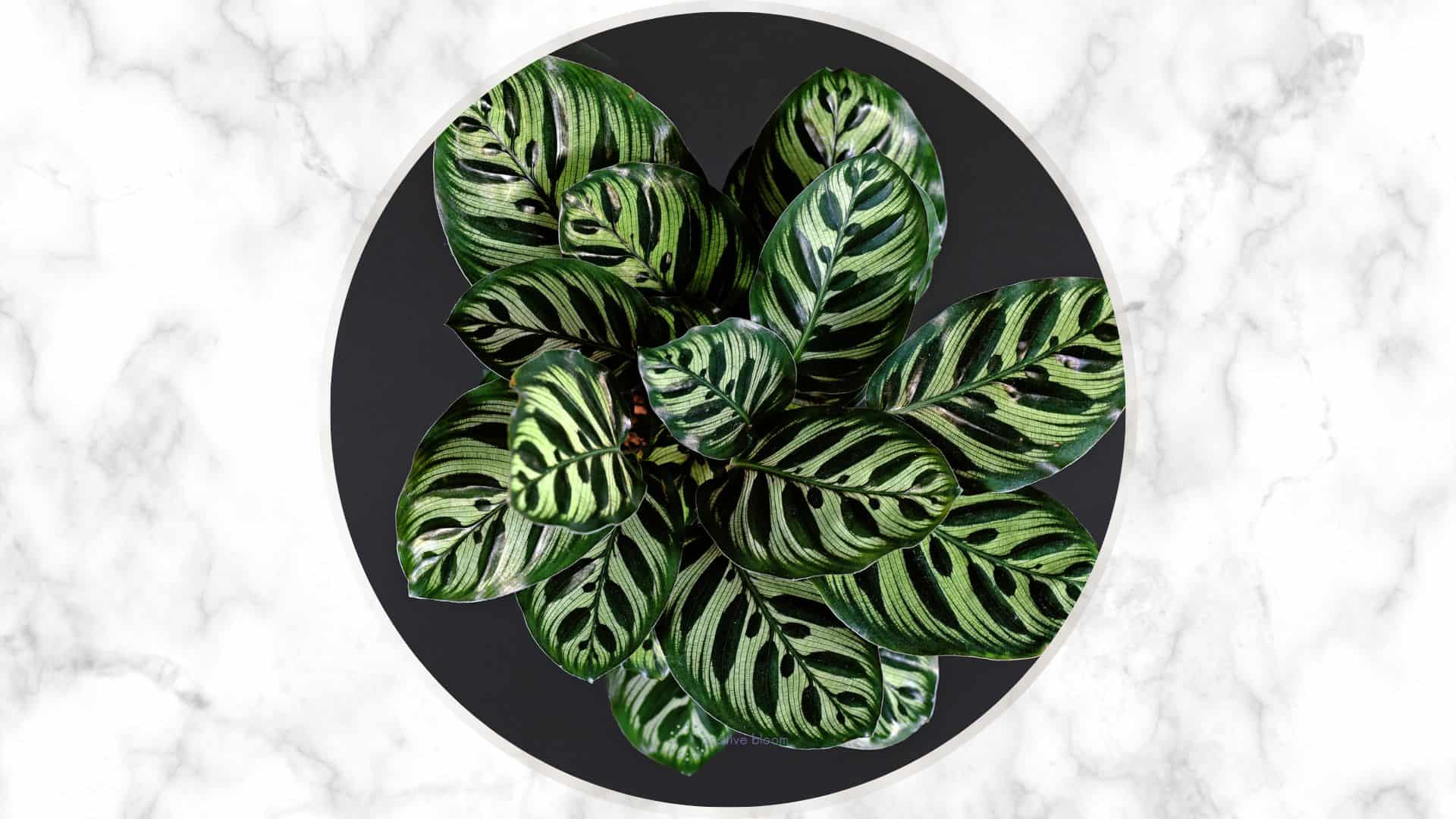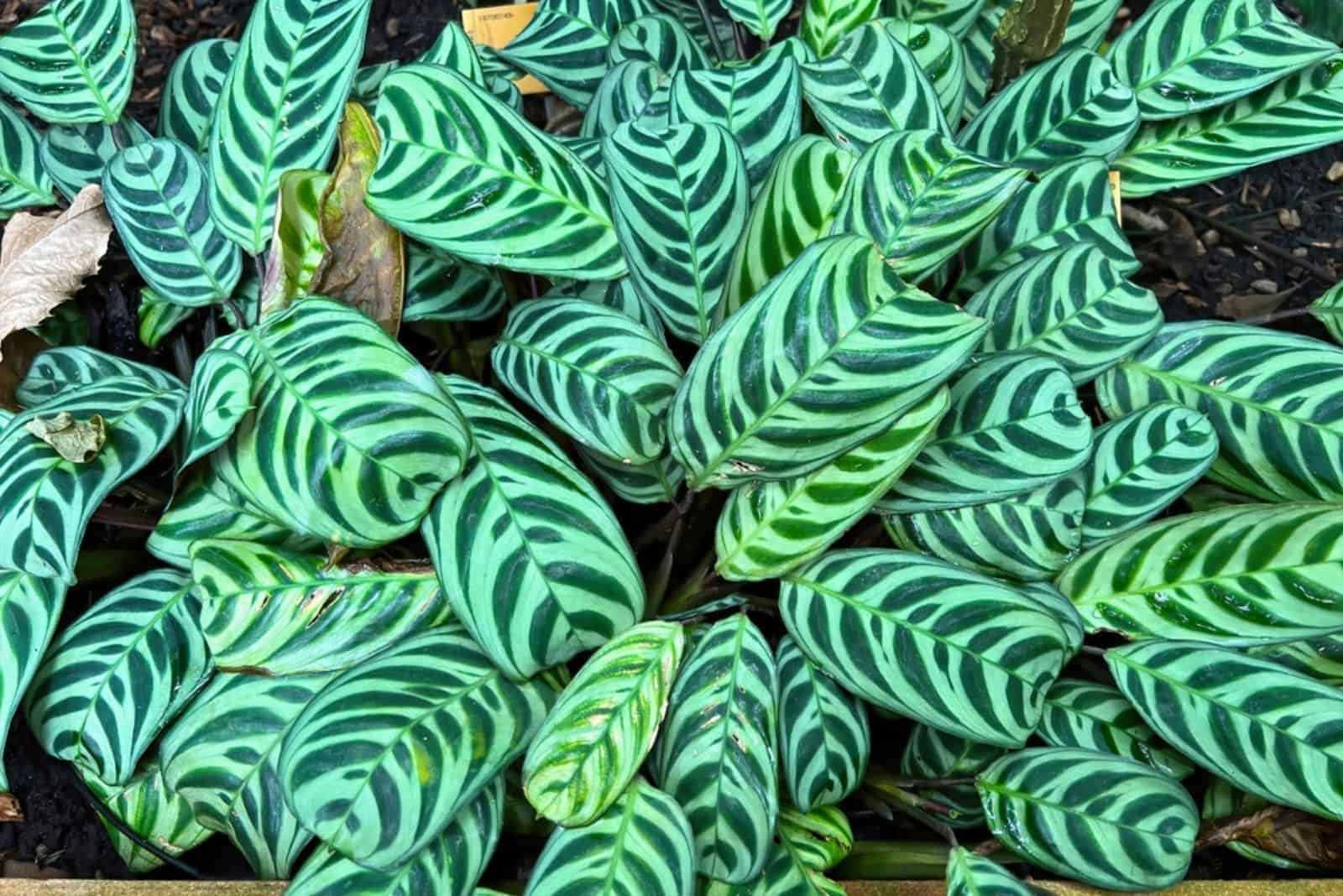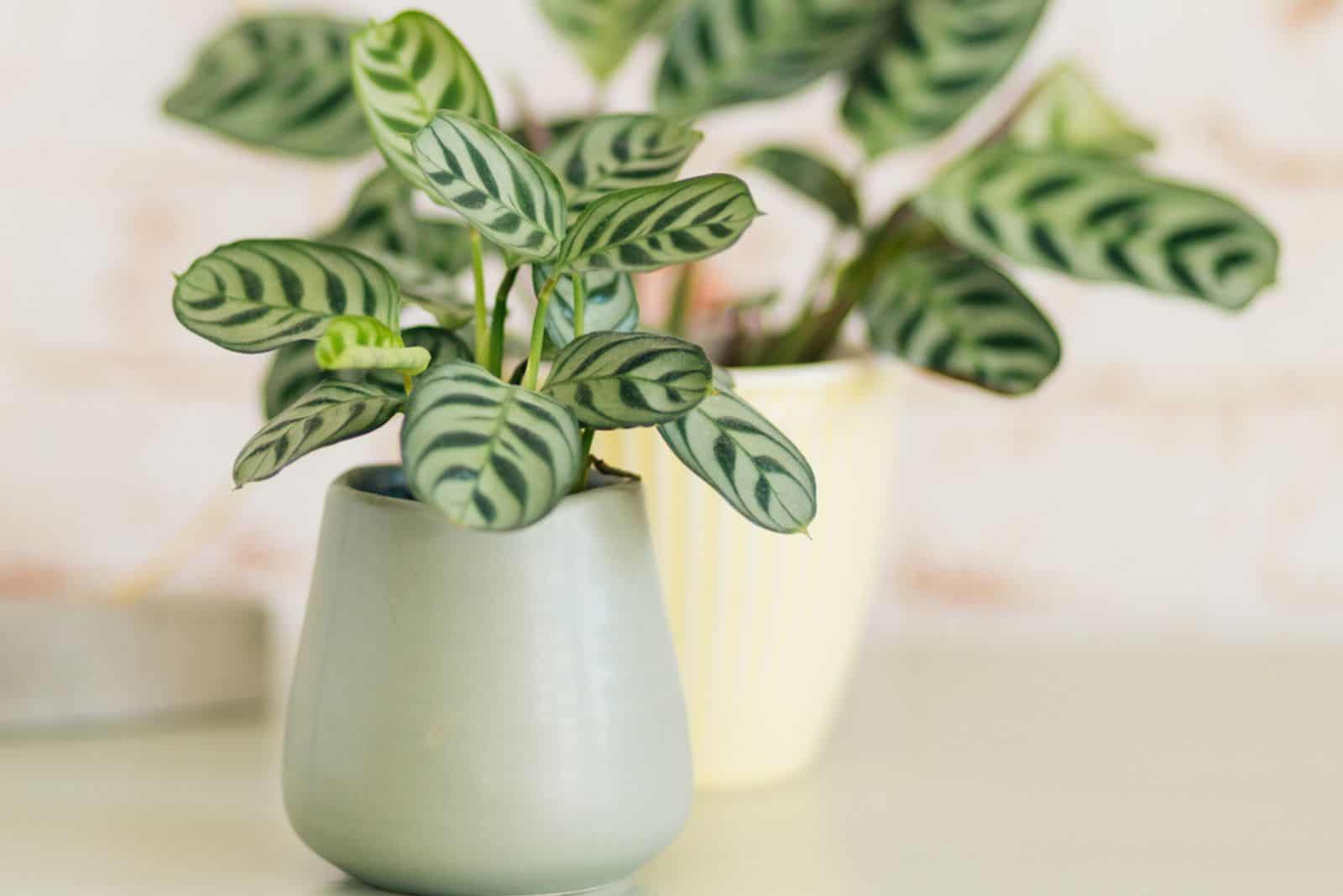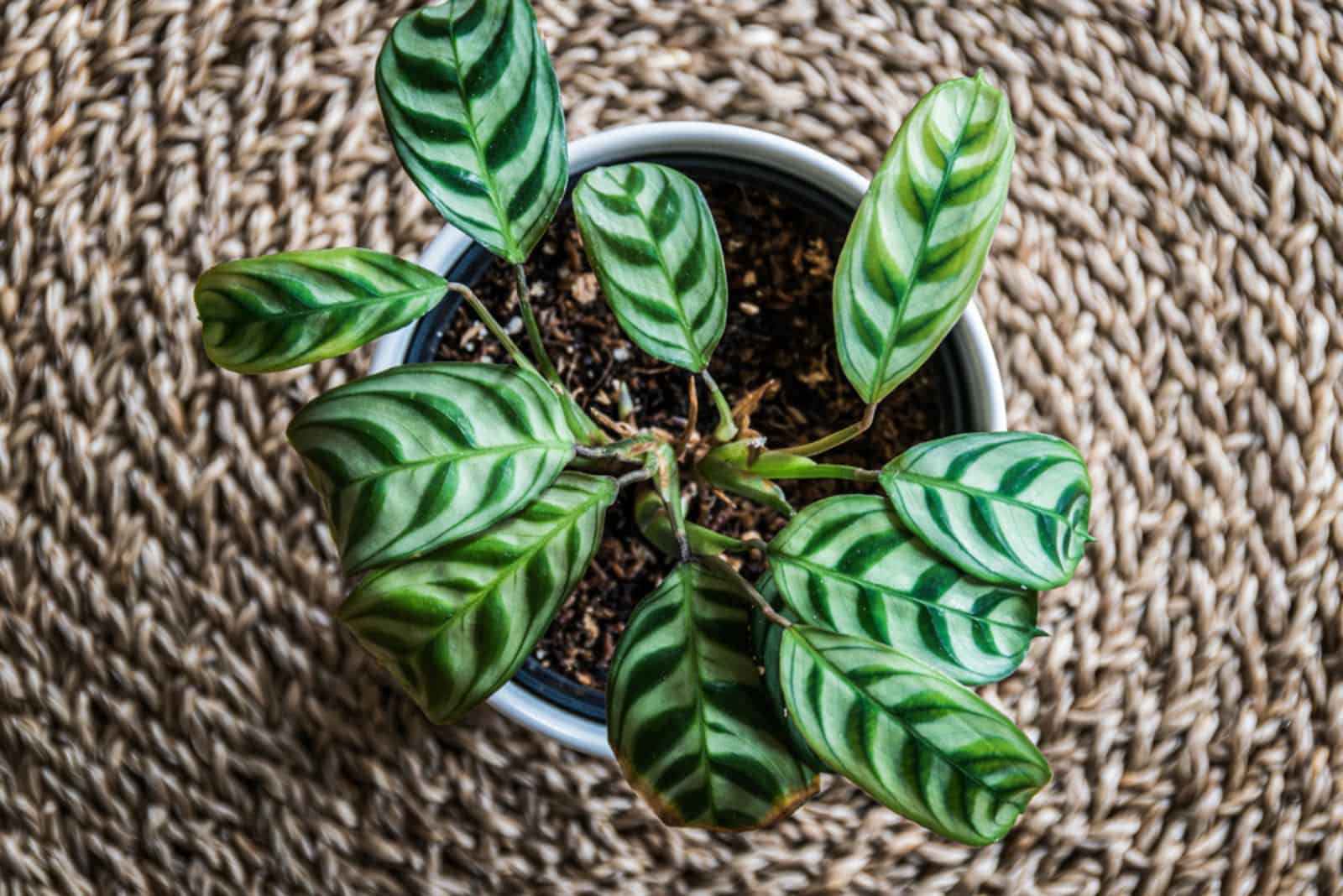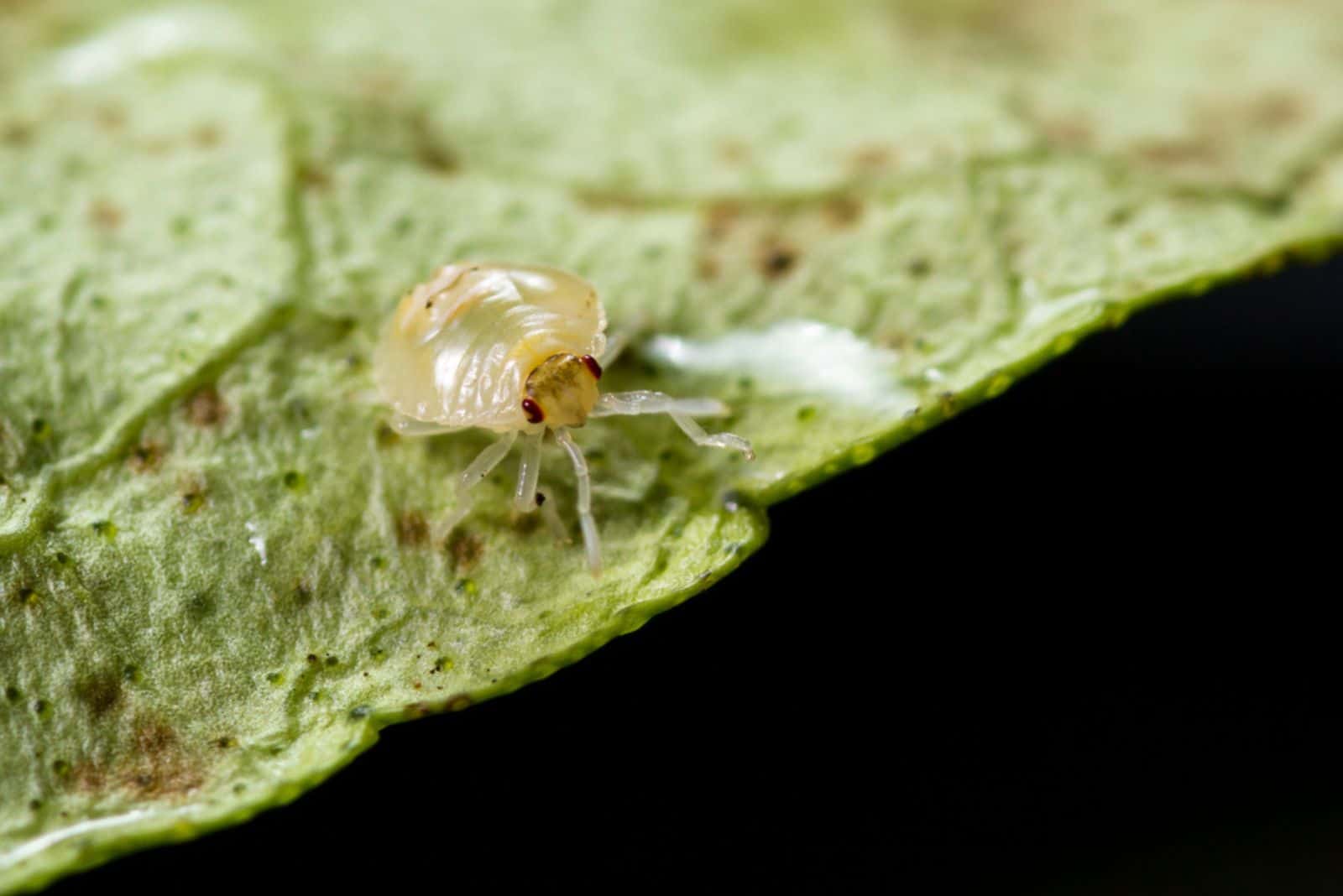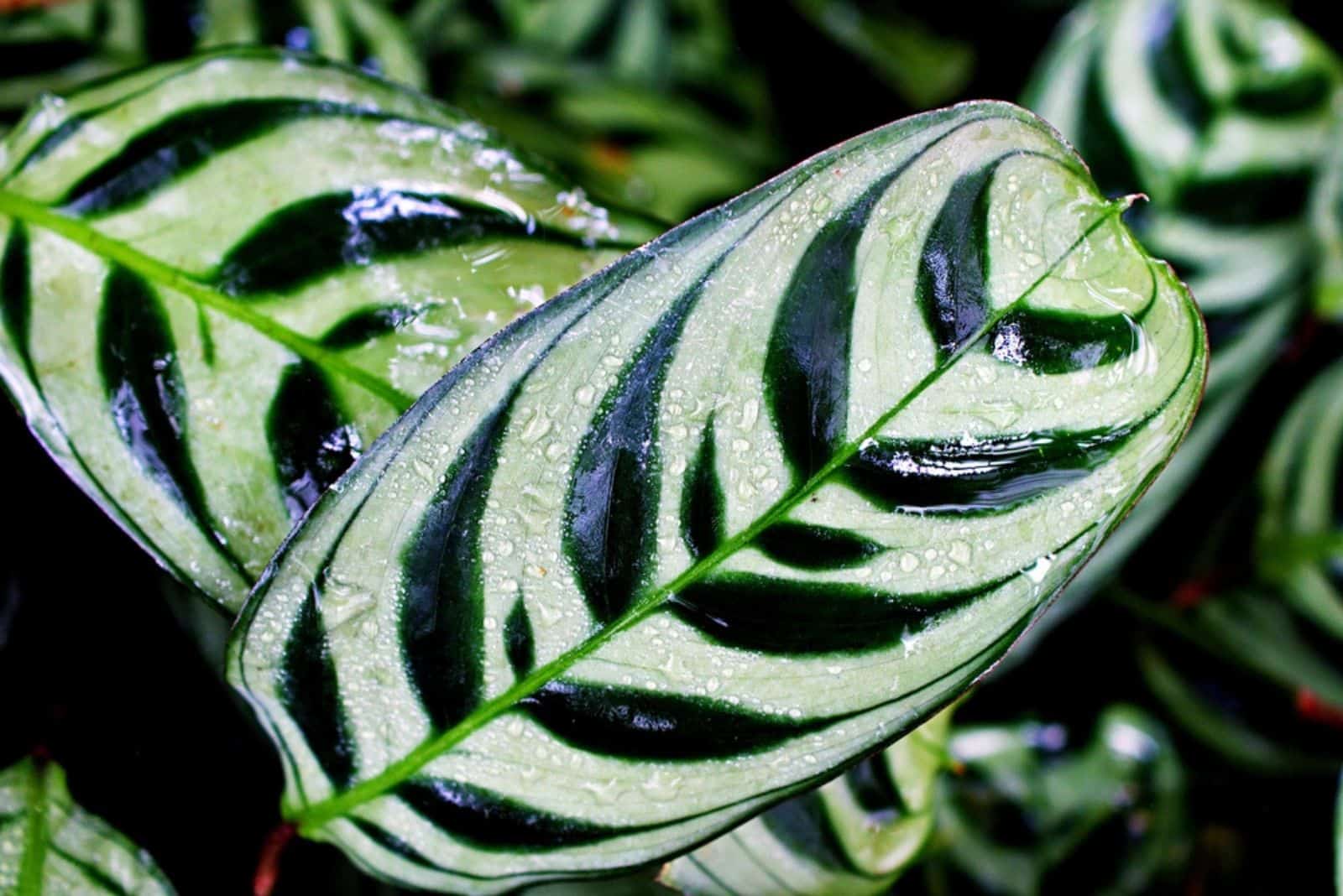Tropical plants are some of the best options for indoor decor because they don’t require too much care (although you do have to water them more frequently than succulents).
And one such plant that deserves a spot in your collection is the fishbone prayer plant. It has many common names, such as Calathea burle marxii, Calathea amabilis, Stromanthe amabilis, and Calathea fishbone.
It got its name from the famous plant enthusiast and landscape artist, Roberto Burle Marx, it belongs to the prayer plant family (Marantaceae), and it has impressive patterns that will beautifully adorn your home.
But let’s first look into its main specifics before dealing with its care guide and common problems:
[table id=575 /]
Fishbone Prayer Plant Care Guide
The fishbone prayer plant requires indirect light for the best growth, well-drained potting soil, high humidity, and water only when the top couple of inches of the growing medium are dry.
You should also fertilize it throughout its growing season, repot it once you see the roots protruding from the drainage holes, and propagate it so you can give unique gifts to your friends and family.
Also, it has similar requirements to those in the care guide for the rattlesnake plant, which makes it a perfect shelf companion for this species. (Growing plants with virtually the same needs reduces gardening chores!)
Light Requirements
This houseplant thrives in indirect light because it’s similar to its natural environment. And if you grow it indoors, place it on an east- or south-facing windowsill to provide the best growing conditions.
This Maranta plant can tolerate early morning or late afternoon direct sunlight, but if you expose it to too much light during the hottest parts of the day, its delicate leaves will get sunburnt.
You shouldn’t keep it in the dark because it can become leggy and get pale green leaves, which lose their allure. In this case, you should move this indoor plant to a brighter spot, but do so gradually so that it doesn’t burn in the sun.
Water And Humidity
The Ctenanthe burle-marxii plant loves moisture, but you shouldn’t keep the soil dripping wet since that can lead to root rot.
To avoid this, water your fishbone prayer plant only when the topsoil dries out, and it will thrive. Irrigate it thoroughly until you see the excess water draining through the drainage holes, then empty the bottom tray.
You can also try using rice water for your plants because it will replenish some nutrients and keep them healthy until you fertilize them.
Distilled and rainwater are also fine, but if you use tap water, leave it in the air for about 24 hours before watering your plants with it so that the chlorine can evaporate.
Humidity
The Calathea burle-marxii is a tropical plant, and as such, it requires a humid environment for the best growth.
It thrives when the indoor humidity exceeds 60%, so you should use a humidifier to make that happen. You could also move it to a more humid room, such as the kitchen or bathroom.
Misting is another way to increase humidity, but don’t overdo it since it can lead to powdery mildew and leaf spot appearing and tainting the fishbone pattern.
Temperature
The preferred temperature of this plant is between 65-85°F, although it can endure temperatures as low as 30-40°F.
However, you shouldn’t expose it to them for too long, or you risk damaging your plant permanently. Instead, keep it at room temperature and overwinter it indoors if you live in a colder region.
You shouldn’t place it near drafty spaces, such as heaters, ACs, old windows, doors, etc., either, since the air is drier in these locations and the temperatures constantly change, which will hurt your fishbone prayer plant.
Soil And Fertilizer
This prayer plant requires a well-draining growing medium with a mildly acidic ph between 5.6-6.5. The good news is that you can get an aroid soil mix at your local nursery or garden store.
But if you’d prefer to create one yourself, you can simply mix two parts coco coir, one part perlite and orchid bark, and some worm castings to give your plants a head start.
Fertilizer
The best fertilizer for this plant would be a well-balanced liquid one, or you can use slow-release fertilizer spikes if you want to reduce your chores.
If you use a liquid fertilizer, dilute it to at least half-strength and feed your plants 1-2 times a month. But if you prefer slow-release fertilizers, you can use them every 3-6 months, depending on the product.
Only feed your plants during their growing season, which starts in early spring, and water them afterward to make the nutrients available and prevent root burn.
Propagation Of The Calathea Burle-Marxii
Fishbone prayer plant propagation is simple, and if we compare the care guide for Geoppertia roseopicta (another prayer plant), we’ll see that you can multiply both plants in the same way: through root division.
You can also propagate this plant from stem cuttings, but that’s not so common, so we’ll stick to the division method.
Step 1. This prayer plant grows in clusters, so your first step is finding ones with plenty of rhizomes (roots) you can divide. Take the fishbone prayer plant out of its pot, expose its roots, and separate them with your hands. (You can use sterilized pruners if you can’t divide them gently).
Step 2. Take the new containers, place some soil in them, then the baby plants, and fill them with more potting medium. You should also use a fresh potting medium when returning the parent plant to its pot.
Step 3. Water your new plants and place them in a spot with bright indirect light so they can grow properly. Increase the humidity to at least 60%, and you’re done!
If you want to reduce your chores, consider propagating this plant when repotting!
Repotting
The best time for repotting is in spring when the plant wakes up from dormancy and can acclimate to the new pot and soil.
Also, this species doesn’t grow that fast, but you should still repot it every 2-3 years or when you see its rhizomes peeking out through the potholes.
Step 1. Take the plant out of its pot, and if its roots are bound and entangled, divide them before potting the fishbone.
Step 2. Choose a container 1-2 sizes larger than the previous one, put some potting soil in it, place your plant, and fill it with more growing medium.
Step 3. Water your prayer plant, ensure it is in a high-humidity environment, and expose it to indirect light.
Pro tip: If you use commercial potting mixes, check whether they contain plant food. If they do, you shouldn’t fertilize this plant for about six months.
Pruning
You should trim this plant 2-3 times a year to promote lusher and newer growth. When pruning, ensure that you always cut slightly above the leaf node because that’s where the new leaves will shoot out from.
You should also cut all diseased, discolored, and old leaves since they take up space and waste the plant’s energy.
Finally, remove leggy shoots as they are too heavy for the plant and won’t turn back to normal.
Common Problems With The Ctenanthe Burle-Marxii
Unfortunately, the fishbone prayer plant can fall victim to common houseplant pests and diseases and suffer from various leaf discolorations.
You may also see your prayer plant drooping, the main reasons for which are over and under-watering.
Below, you can see the causes of some of the most common issues with this variety and learn how to deal with them.
Pests
The most frequent pests that attack the fishbone prayer plant are mealybugs, aphids, and spider mites. These insects infest your plant if it’s neglected, so care for it properly, and you won’t have to deal with infestations.
If they do happen, you can get rid of pests by using horticultural oils, insecticidal soaps, or even pesticides if nothing else seems to be working.
And if the infestation is still new and small, you can always pick the bugs off one by one or use a cotton swab dipped in alcohol.
Diseases
Root rot is the most common disease that affects the fishbone prayer plant, which is caused by overwatering. To prevent it, simply irrigate your plant once the top 2-3 inches of the growing medium are dry.
But if you notice symptoms such as droopiness, leaf discolorations, slow growth, and an unpleasant smell coming from the pot, you should inspect the plant’s roots.
If the roots are brown or black and soggy, you should remove them and spray the remaining ones with a fungicide to prevent the return of the disease.
Then, repot your plant into fresh potting soil and a clean container, and water it only when the top part of the substrate is dry.
Brown Leaf Tips And Margins
The most common cause of brown leaf tips and edges is too much light.
However, low humidity can also lead to the same issue, so make sure you keep your plant in a spot with indirect light and turn on a humidifier.
Yellow Leaves
Yellow leaves are usually a sign that your plant’s been overwatered, so you should check the soil to confirm this. If the substrate is normal, then the cause could be a lack of sunlight or nitrogen deficiency.
Therefore, keep your plant in bright indirect sunlight, water it only when the top few inches of the growing medium are dry, and fertilize it throughout its season.
FAQ
Is the fishbone a flowering plant?
Yes, the fishbone prayer plant produces white flowers in late winter or early spring. The blossoms aren’t fragrant, but they do look adorable, especially with their bright-red bracts.
What does the fishbone prayer plant look like?
The fishbone prayer plant resembles the Maranta leuconeura because of its pale green leaves, darker leaf patterns, and purple undersides.
However, the pattern is different and looks like a fishbone, hence the name.
And if you’ve ever seen a prayer plant at night, you’ll notice how this one folds its leaves, just like the maranta.
Final Thoughts
The fishbone prayer plant needs indirect light, a well-draining substrate, high humidity, and water only when the top part of the soil is dry in order to prosper.
And if you want to boost its growth, you can fertilize it during its growing season and repot it every 2-3 years or whenever you see its roots sticking out of the potholes.
Furthermore, inadequate care can lead to many issues, such as pest infestations, root rot, yellow leaves, and brown leaf tips, so make sure to meet its requirements and keep it thriving.
Enjoy this beautiful species, and until next time!
Like this post? Share or pin it for later!

